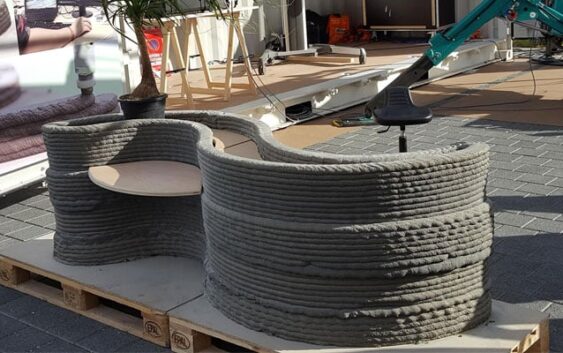- EMZOR TO CONSTRUCT US$$23M API FACILITY IN NIGERIA
- TANZANIA PRESIDENT ANNOUNCED CONTRIBUTION OF TZS100MILLION FOR ARUSHA CHURCH CONSTRUCTION
- KITGUM-KIDEPO ROAD UPGRADE: UGANDA PARLIAMENT APPROVED SHs450BILLION LOAN
- GPA ANNOUNCED PLANS TO BUILD SECOND LANDER BRIDGE IN THE GAMBIA
- HOW CAMEROON AVIATION SAFETY KEEPS IMPROVING BUT FALLING SHORT OF INTERNATIONAL STANDARD
HOW 3D CONCRETE PRINTING TECHNOLOGIES CAN HELP BUILDING INDUSTRY

As the world continues to grapple with the challenge of climate change, the concept of net zero energy buildings has gained traction worldwide, including in Nigeria. As a country committed to reducing its carbon footprint and promoting sustainability, Nigeria has the potential to become a global leader in net zero energy building construction, thanks in part to the emergence of 3D concrete printing technology.
Net zero energy buildings are designed to generate as much energy as they consume, resulting in a net zero energy footprint. Achieving this requires a combination of renewable energy sources and energy-efficient design features. 3D concrete printing technology has emerged as a game-changer in the construction of such buildings due to its several advantages.
One advantage of 3D concrete printing technology is that it allows for the creation of complex and intricate designs that are difficult to achieve using traditional construction methods. This is particularly important in net zero energy buildings, where energy efficiency is dependent on design. The technology enables architects to create intricate geometries and shapes that facilitate the construction of more efficient building envelopes.
Furthermore, 3D concrete printing technology allows for the use of sustainable materials that are locally sourced, have a lower carbon footprint than traditional building materials, and are crucial to achieving sustainability goals in Nigeria.
Another advantage of 3D concrete printing technology is that it reduces construction waste. The technology allows for precise measurements and minimal material waste, resulting in a cleaner and more sustainable construction process.
The potential of 3D concrete printing technology for net zero energy building construction in Nigeria is immense. This technology has the potential to transform the way buildings are constructed in the country, making them more energy-efficient and sustainable. It also offers the potential for cost savings, as construction times can be reduced, and waste minimized.
However, there are challenges that need to be addressed before the technology can be widely adopted. One of the key challenges is the high cost of 3D printing technology, which may hinder accessibility for a wider range of builders and construction companies.
Moreover, education and training programs are needed to equip architects, engineers, and construction professionals with the necessary skills and knowledge to design and construct net zero energy buildings using 3D printing technology.
In conclusion, the future of net zero energy building construction in Nigeria using 3D concrete printing technology is bright. With adequate investment and support, this technology could become the key to building a more sustainable and energy-efficient future for Nigeria, while also contributing to global efforts to combat climate change.

